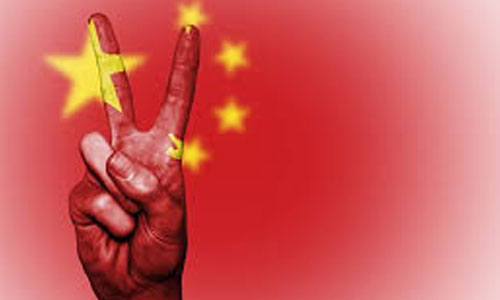As China has had effective and non-aggressive policies in the region it can be called a good example of peace and success in today’s world. The Chinese government’s policy as equality among the ethnicities and religions that has been mentioned in the country’s constitution. People in China enjoy freedom of religion. They have equal rights and responsibilities. There is no restriction for the Chinese people to carry out their religious rituals. Religious and ethnic discriminations are banned in China and the government acts against any kind of discrimination. The Islamic college is the largest theology institute for the Muslims in Xinjiang in which hundreds of Muslim students study Islamic subjects like the holy Koran and Hadith. The government provides facilities to the Muslims to visit Mecca in Saudi Arabia for performing the annual Hajj pilgrimage. Muslims are free to take fast during the month of Ramadan.
The most populated Muslim area in China is called Xinjiang; the number of Muslims in Xinjiang is around eight million that make up both Shiites and Sunnis. However, as a secular country, politics are separated from religious beliefs, and religion should not interfere in the administration and political affairs. China firmly opposes terrorism and extremism under the religious pretext, and students at schools are taught that violence, terrorism and extremism have no place in the country.
Xinjiang is linked to other regions by the newly-built highways, railroads and has an international airport that receives flights from inside the country and abroad. Hundreds of construction and development projects are seen around the city of Urumqi that explains the government and people’s interest and hard work to make a bright future and prosperous life for the next generations. While according to resources, there was no highway to Xinjiang 15 years ago, but now highways play the most important role in connecting the area to other regions.
The Uyghur autonomous region of Xinjiang in the west of China has been the heart of the Belt Road project and Afghanistan was also part of the Chinese traders to reach to the Western Asia and then to Africa. Xinjiang is a multi-ethnic region in China is home to different the followers of Islam, Buddhism, Christianity and other religions. Xinjiang border Afghanistan, Pakistan, India, Russia, Mongolia, Kazakhstan, Kyrgyzstan and Tajikistan, where people from more than 50 ethnic minorities such as Uyghur, Tajik, Kazakh, Kyrgyz and Mongol live. Muslims make up the most population from the Uyghur ethnic group.
The Belt Road program which is the continuation of the old famous Silk Road can be considered as the biggest economic program was launched in 2013. The five-trillion-dollar project that is called as the ‘project of the century” links several countries from Asia to the Middle East, Europe and Africa, focusing on transportation, energy, railways, gas pipelines and power plants.
Maintaining old and rich culture is very important for Chinese and the people find their identities and history through this. Monuments, museums and other memorial things display the ancient and historic events about the country to the visitors. Moreover, Chinese people are very interested in cinema, theaters and operas and talented artists perform in the theater halls. Accordingly, Media has developed significantly in Xinjiang with dozens of newspapers, magazines, radio and TV broadcasters informing the people what happens in the country and abroad.
Economically, China is considered as a second world economic power and its government’s free business policy has had positive results, opening the doors for foreign investments. Several giant international companies have invested in different sectors such as infrastructure and development. Holding good policy has helped China’s economy increase and has brought an eye-catching change in the people’s economic situation. The foreign investment is just part of the economy, while thousands of its own manufactures that are run by the talented and professional Chinese people export goods to the world, and Chinese products have occupied the international markets. The government of China plans to uproot poverty by the third decade of the current century.
The economic success of China gets back to the historic reform made by the leader of Chinese Communist Party (CCP) in 1978 when China has shifted from a centrally-planned to a market-based economy. GDP growth has averaged nearly 10 percent a year—the fastest sustained expansion by a major economy in history—and has lifted more than 800 million people out of poverty. China reached all the Millennium Development Goals (MDGs) by 2015 and made a major contribution to the achievement of the MDGs globally. Although China’s GDP growth has gradually slowed since 2012, it is still impressive by current global standards.
With a population of 1.3 billion, China is the second largest economy and is increasingly playing an important and influential role in development and in the global economy. China has been the largest contributor to world growth since the global financial crisis of 2008. So, Increasing China-Afghan cooperation can be effective for Afghan economic stability; on the other hand, the Chinese dream in her relations is peace, development, cooperative and win-win results, and it is similarly connected to the Afghan dream. Afghan government must not take a passive approach towards the technical and investment opportunities in building her infrastructures. We should not let the new type of relations stay as a concept or unpractical; we should push it forward and pave the way for more investments. The government should encourage and ensure the security of international business men and women who are interested to invest in Afghanistan.
Home » Opinion » China: The Unique Example of Peace and Success
China: The Unique Example of Peace and Success
| Mohammad Zahir Akbari

